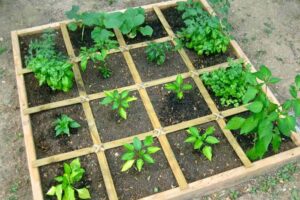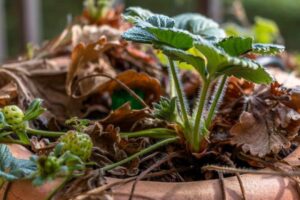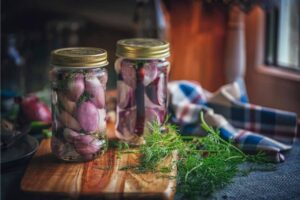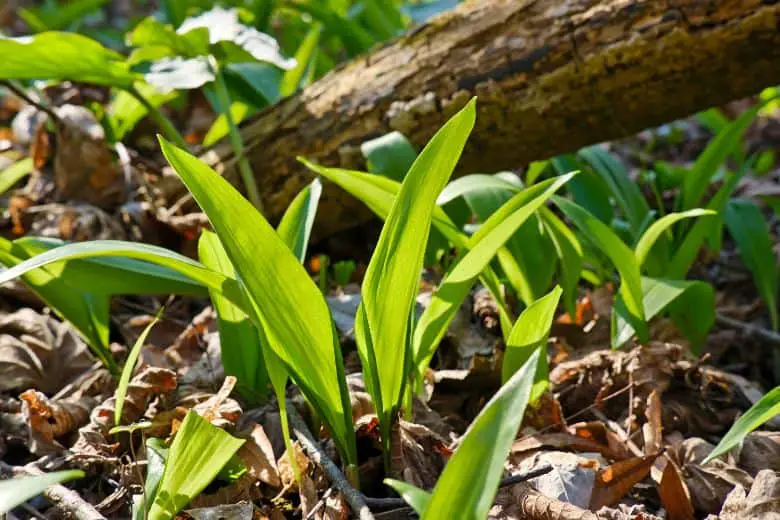
Wild garlic, also known as ramsons, is a delicious and nutritious, aromatic ingredient that is primed for harvesting in early spring. If you’re lucky enough to have wild garlic growing in your garden or local foraging area, you surely want to learn how to preserve wild garlic properly to enjoy its flavor throughout the year.
There are several effective methods for preserving wild garlic’s flavor. We have included some of the best methods for preserving wild garlic so you can enjoy its potent flavor all year round.
Have a look.
How to Preserve Wild Garlic ( 4 Diverse Methods)
1. Drying
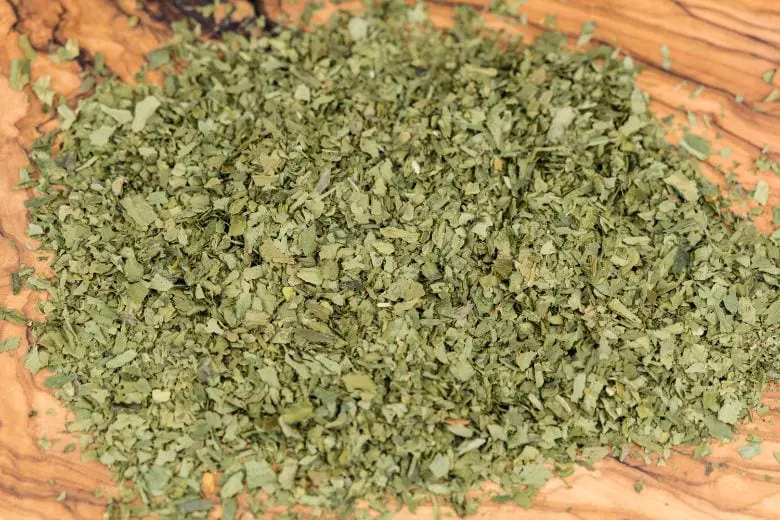
One of the simplest ways to preserve wild garlic is by air drying it. This preserves the flavor without using any additional ingredients. To dry wild garlic:
- Gather wild garlic just as the flowers begin to open up but before the seed heads form. The flavor will be stronger at this stage.
- Wash and dry the leaves and flowers thoroughly. You can leave them attached to their stem or remove them – either way works.
- Tie small bunches together with string and hang them upside down in a dry, well-ventilated area out of direct sunlight. An overhead attic, basement, or shed works well.
- Allow the bunches to dry for 2-4 weeks until the leaves and flowers are completely dry and crispy. Give them an occasional shake to watch for any moisture buildup.
- Crumble or chop the dried leaves and flowers and store them in an airtight container. They will keep for up to 6 months.
- Add dried wild garlic to soups, stews, pasta sauces – anywhere you want a hit of garlicky flavor. The dried form is very concentrated.
2. Pickling

Pickling is another great preservation method that captures the bright flavor of wild garlic. Try this recipe:
- Gather wild garlic just as the flowers begin to open up. Remove and discard the lower stems but leave the flowers and upper stems intact if desired.
- Bring a pot of water and 2% salt solution (2 tablespoons salt per 1 cup water) to a boil. Add wild garlic and blanch for 30 seconds.
- Drain immediately and transfer to sterilized jars, packing them tightly.
- In a separate pot, combine white vinegar or apple cider vinegar (enough to cover the garlic), water, sugar, and pickling spices to your liking ( dried chilies, peppercorns, etc). Bring to a boil.
- Pour the hot pickling liquid over the packed wild garlic, leaving 1/2 inch headspace. Seal jars and process for 10 minutes if under 1,000 feet elevation or 15 minutes over.
Note:
The pickled wild garlic will last in the refrigerator for 6-12 months. Enjoy it with cheese, charcuterie, sandwiches, and more for that garlicky zing all year.
3. Pesto
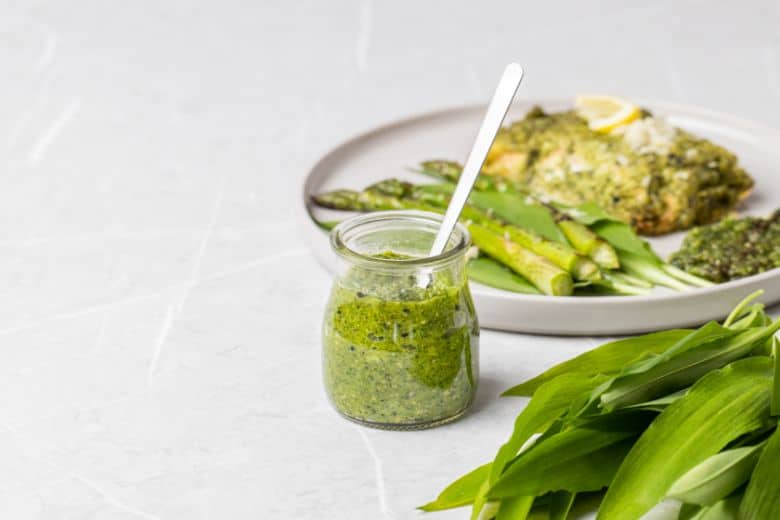
Making pesto from wild garlic is a simple way to capture its intense flavor in a spreadable form. Fresh pesto can be enjoyed immediately or preserved further by canning.
- Gather washed wild garlic leaves. Remove and discard the lower tougher stems but keep the tender upper stems and flowers if desired.
- Bring a pot of salted water to a boil. Blanch wild garlic leaves for 30 seconds, then plunge into ice water to stop the cooking process. Drain and pat dry.
- In a food processor or high-powered blender, combine the blanched garlic with pine nuts, olive oil, Parmesan, or other hard cheese, salt, and pepper to taste.
- Process until smooth and paste-like, scraping down the sides as needed. Taste and adjust seasoning.
- For immediate use, transfer the pesto to a serving dish and top it with more olive oil to prevent browning. Or to preserve, follow the canning instructions for pesto below.
- Canned pesto should be processed for 15 minutes. Store canned jars in a cool, dark place for up to 1 year. Refrigerate after opening.
- Use pesto on pizza, pasta, sandwiches, as a dip, added to soups, and more! Its bright flavor will lift your meals all winter long.
4. Freezing
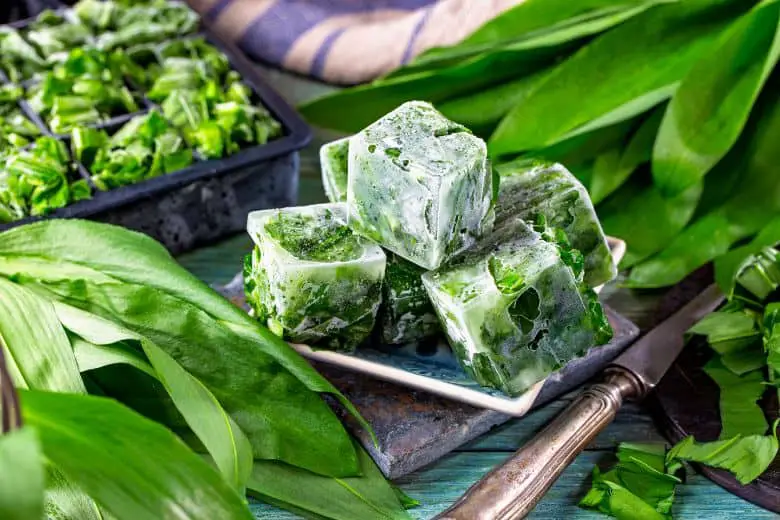
Freezing is an excellent way to preserve wild garlic while maintaining much of its texture and bright flavor. Simply wash, chop, and blanch the wild garlic, and then package and freeze. Here are more specific instructions:
- Wash and finely chop wild garlic leaves and flowers.
- Bring a pot of salted water to a boil. Add chopped garlic and blanch for just 30 seconds.
- Immediately plunge into an ice bath to halt the cooking process. Drain well.
- Package blanched garlic in freezer-safe bags, pressing out excess air. Label bags with contents and date.
- Frozen wild garlic will last 8-12 months. Thaw before using in recipes like stir fries, soups, sauces, and more.
- For freezing pesto or wild garlic oil, follow the same blanching and packaging steps above. Just be sure to leave headspace in containers for expansion during freezing.
Safety Precautions
- While wild garlic adds amazing flavor to dishes, a few precautions should be taken when preserving:
- Only harvest garlic that you have positively identified. Be certain of the plant’s identity.
- When canning pesto or other high-acid preparations, always follow current USDA-approved canning instructions to avoid potential botulism risks.
- Process jars in a water bath canner at the proper temperature and elevation adjustments for your location.
- Store all preserved wild garlic in a cool, dark place and check periodically for spoilage. Discard any suspect jars or packages.
- When freezing, be sure garlic is blanched and properly packaged to prevent freezer burn and mold growth.
Remember that some people may experience an allergic reaction to wild garlic, so those with known allergies or sensitivities should introduce preserved products gradually.
With the proper preservation methods and safety precautions, you can enjoy wild garlic’s unique flavor long after its fleeting season ends. Just be sure any preserved products are properly stored and handled. Properly stored dried, pickled, frozen, or canned wild garlic should provide months of tasty meals!
Benefits of Eating Wild Garlic
Let’s see some key benefits of eating wild garlic:
- Rich in Allicin: Wild garlic contains allicin, a compound that gives it its characteristic garlic smell and flavor. Allicin is known for its potent antioxidant and anti-inflammatory properties.
- Heart Healthy: Compounds in wild garlic help reduce blood pressure and cholesterol levels, protecting against heart disease. Regular consumption may lower the risk of heart attack and stroke.
- Immune Boosting: Wild garlic supports immune function and may help ward off colds, flu, and other infections due to its antibacterial and antiviral effects.
- Anti-Cancer Properties: Early research suggests allicin and other phytochemicals in wild garlic exhibit anticancer activity, especially against cancers of the stomach, colon, breast, and prostate.
- Blood Sugar Regulation: Wild garlic may help control blood sugar levels and reduce the risk of diabetes due to its positive impact on insulin sensitivity.
- Digestive Aid: The prebiotic fiber in wild garlic supports the growth of healthy gut bacteria and aids in food breakdown and waste elimination. It can ease symptoms of indigestion, gas, and bloating.
Adding wild garlic to your diet provides a tasty way to access these important health-promoting benefits, especially if you can forage or harvest it fresh from the garden.
Post-Harvesting Care
No matter which preservation method you use for wild garlic, a few post-harvest care tips will help ensure your stash of preserved wild garlic retains maximum flavor and quality:
# Store dried wild garlic in a cool, dark place in an airtight container away from light, heat and moisture to prevent loss of flavor compounds.
# Refrigerate pickled, frozen or fresh pesto products and use within 2-3 months for best flavor and nutrition.
# Check canned goods periodically for swollen or leaking lids which could indicate potential spoilage. Discard suspect jars.
# Clearly label and date all preserved products so you know when they were processed for first-in, first-out use.
# Introduce preserved wild garlic to cooked dishes toward the end of cooking time to prevent loss of volatile flavor compounds to heat.
Conclusion
With the proper harvesting and post-harvest care, your preserved wild garlic should last well into the next season, allowing you to enjoy that bright garlicky flavor all year long! Be sure to experiment with different preserved forms and savor that early spring taste even during the depth of winter.

